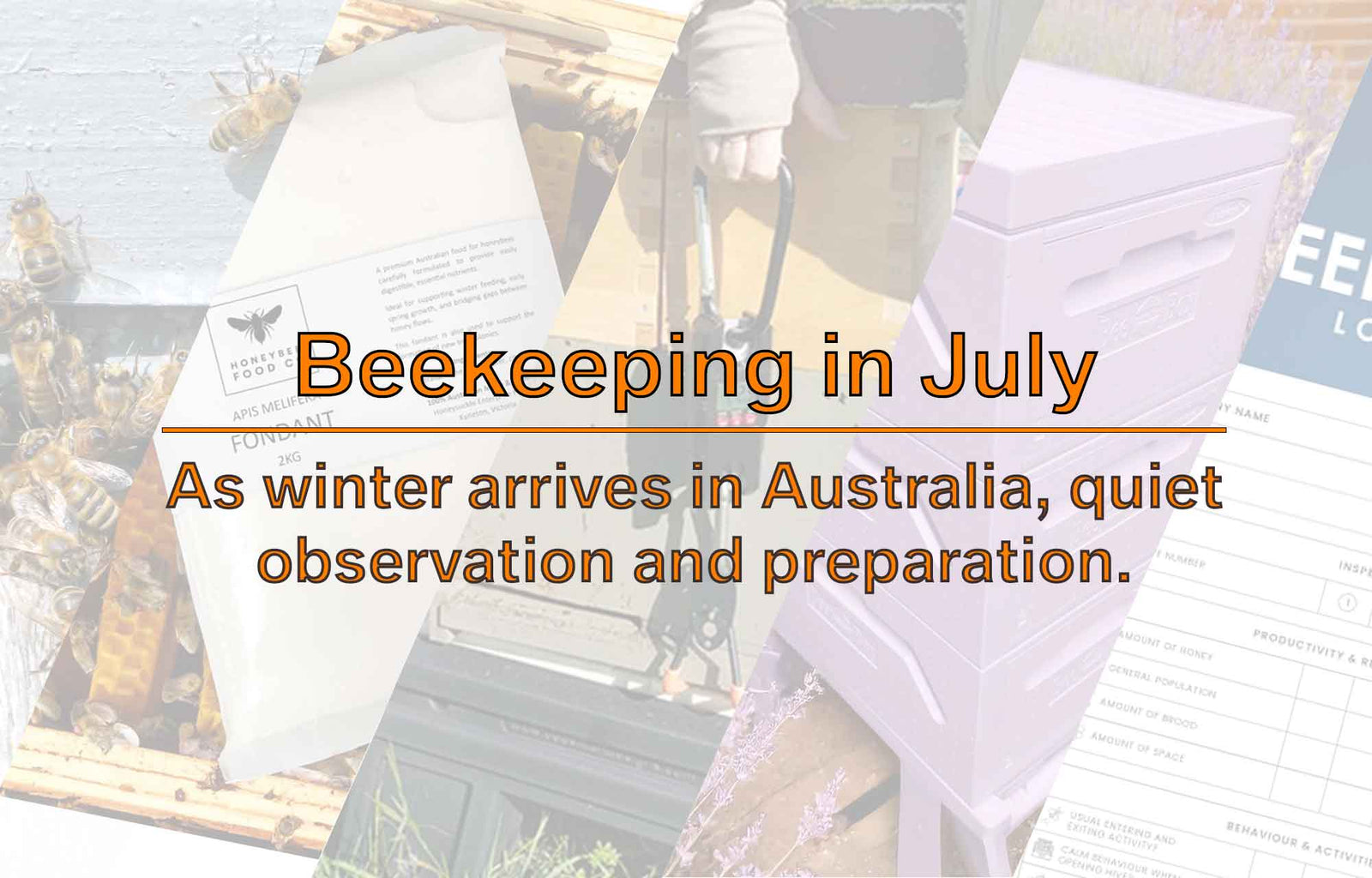🐝 Beekeeping in July: Winter Care for Australian Beekeepers
As the coldest month of the year settles in, Australian beekeepers enter a period of quiet observation and preparation. July is not about doing more—it’s about doing the right things. For beginner beekeepers, this is a critical time to ensure your hives are surviving comfortably and safely while you prepare for the busy spring season ahead.
Here are the top 5 tasks and tips for July beekeeping in Australia:
1. ❄️ Minimise Hive Disturbance
Objective: Keep your bees warm and stress-free.
Why it matters: Bees cluster tightly in winter to maintain warmth. Opening the hive unnecessarily can cause temperature drops and stress.
Tips:
- Avoid opening the hive unless absolutely necessary.
- Perform external visual checks on sunny, calm days. Are you seeing a small number of bees coming in and out of the reduced entrance?
- If you must inspect, be quick and only open for essential checks (e.g., moisture issues or confirming food stores). Try to plan this at the warmest part of the day and preferably over 16 Deg C.
2. 🍯 Feed Solid Food if Needed
Objective: Ensure your bees have enough accessible food.
Why it matters: Bees use up stores during winter. Liquid syrup is hard to digest in cold weather, especially below 6°C, which is common in July in many parts of the Australian continent.
Tips:
- Lift the back of the hive to feel the weight—if it's light, your bees may be running low on food.
- Provide fondant or a dry sugar supplement (like Buzzbee’s Bee Fondant) directly above the cluster using a feeder board or baking paper.
- Avoid overfeeding if stores are sufficient—it’s about support, not over-intervention.
3. 💧 Check for Moisture Build-Up
Objective: Prevent cold, damp conditions inside the hive.
Why it matters: Moisture can be more deadly than cold. Condensation drips chill bees and promote mould growth.
Tips:
- Ensure the hive is slightly tilted forward to let moisture run off.
- Use absorbent material like a piece of hessian sack, a few sheet of newspaper or a moisture quilt box above the inner cover.
- Check under the lid for signs of mould or wet frames—dry them out if needed.
4. 🔒 Secure Your Hive from Wind and Pests
Objective: Protect your hive from external threats.
Why it matters: Winter storms and pests can damage or weaken a hive that’s already vulnerable.
Tips:
- Strap or weigh down hives in windy locations.
- Check for evidence of Cockatoos damage, mice or ant invasions—reduce entrance size if needed.
- Ensure the hive stand is stable and elevated to keep it dry underneath.
5. 📚 Use the Downtime to Learn and Plan
Objective: Build your knowledge and get ready for spring.
Why it matters: July is a quiet month for the bees, but a great month for the beekeeper to prepare for growth and learning.
Tips:
- Read up on spring hive management, prepare your varroa plan, swarm control, and queen replacements processes.
- Clean and repair equipment.
- Take a beginner or intermediate beekeeping course if you haven’t already.
- Plan your spring inspection schedule and think about how many hives you'd like to manage in the coming season.
📝 Final Thoughts
In July, less is more. The bees know what to do—you just need to support them with smart, minimal actions however make sure they have enough solid food resources during the winter months. Use this time to become a better observer, a smarter planner, and a more prepared beekeeper.
“A successful spring starts with a smart winter.”
Stay warm, stay curious, and keep learning. Your bees will thank you for it in a few short months!
📩 Have Questions?
We’re here to help beginner and hobbyist beekeepers every step of the way.
📍 Buzzbee Beekeeping Supplies
🌐 www.buzzbee.com.au
✉️ sales@buzzbee.com.au
📞 1300 234 233




